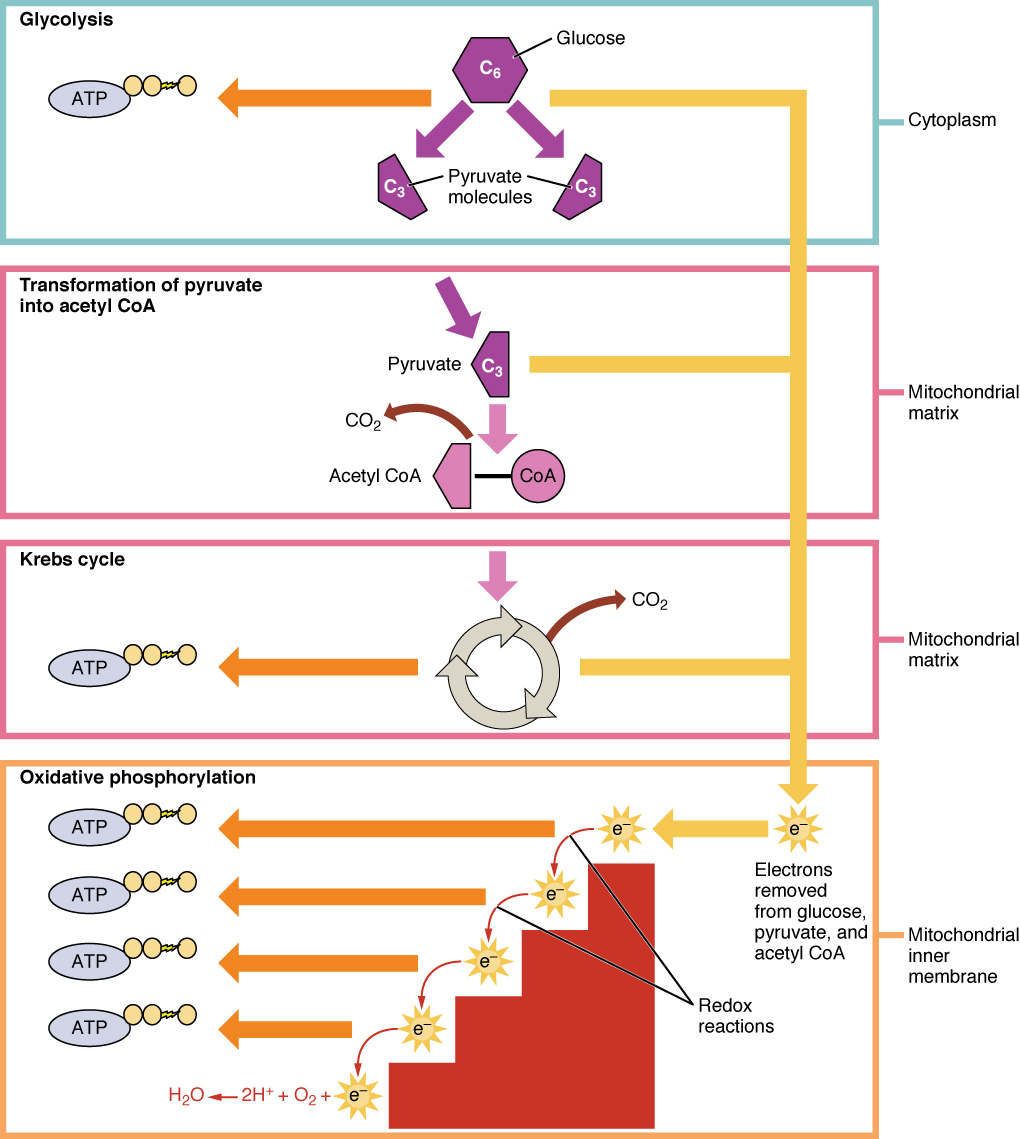Question #daf1f
1 Answer
Warning! Long Answer Ahead!
Explanation:
Cellular respiration refers to a process where energy-rich molecules are broken down to produce ATP. Note that there can be two types of respiration, aerobic and anaerobic.
Aerobic refers to pathways that require oxygen to proceed. The production of ATP takes place in a metabolic pathway - a series of reaction that occurs in a living cell - where the first step is breaking down glucose - glycolysis - the process that splits glucose down to 2 pyruvate molecules.
This occurs over a 10-step process, where 2 ATP need to be invested in order to produce 4 ATP - a net yield of 2 ATP. Two molecules of NAD are also converted into two molecules of NADH. Here, ATP is produced through substrate-level phosphorylation. - which is ATP formation by transfering a phosphate group to an organic compound.
When oxygen is present, the pyruvate produced is then transported into the mitochondrial matrix. For 1 pyruvate molecule, 1 CO2, NADH and Acetyl - CoA is produced.
Acetyl - CoA helps an acetyl group to bond with a 4 carbon molecule known as oxoacetate to began the Krebs cycle. This takes place in the mitochondria matrix. Furthur oxidation of products produces 3 NADH, 1
The final step occurs in the inner mitochondrial membrane. The NADH and


